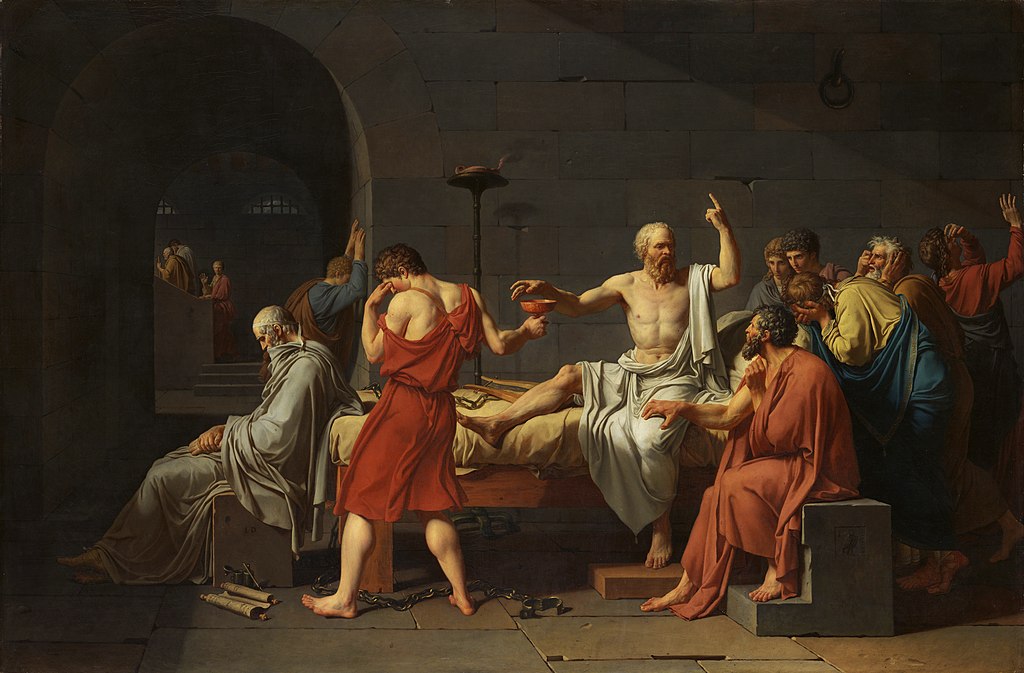
My aim is: to teach you to pass from a piece of disguised nonsense to something that is patent nonsense.
–Ludwig Wittgenstein, Philosophical Investigations
L’une des merveilles du monde
est la faculté des hommes de dire ce qu’ils n’entendent pas,
comme s’ils l’entendaient,
de croire qu’ils le pensent
cependant qu’ils ne font que se le dire.
–Paul Valery, Cahiers I
This may translate roughly as: ‘Don’t believe everything you think. Thoughts are just that – thoughts.’
‘Know thyself’, proclaimed the Oracle of Delphi. From the mouth of the High Master of Ambiguity, this injunction could be nothing less than ambiguous. Socrates, through Plato, took it to mean that this path could lead to ‘truth’: ‘The unexamined life is not worth living’, said Socrates at his trial. We have been examining our lives ever since, hoping to grasp the truth and understand transcendence.

The Oracle’s instruction could also have meant scepticism: awareness that ‘Everything is illusion; it is also an illusion to believe one can live without illusions’ (a Zen master said that, but I can’t get my hands on the exact quote). Or, in the words of the modern philosopher Ludwig Wittgenstein, I quote as the title to this entry: ‘My aim is: to teach you to pass from a piece of disguised nonsense to something that is patent nonsense.’ Paul Valéry is just one of the many warning us along these lines: ‘Don’t believe everything you think. Thoughts are just that – thoughts.’
This is not just idle musing, it has implications in real life (and diplomacy, though whether diplomacy counts as ‘real life’ might be rightly looked at with some scepticism).
How translation impacts our worldviews
I’ve come across an example recently. Jean-François Billeter, a Swiss sinologist, has accused François Jullien (see Contre by Jean-François Billeter), the eminent dean of French sinology, of mistranslating basic concepts of Chinese thought. Jullien does not translate, for instance, the term ‘dao’, or uses a set word ‘way’, irrespective of context. Billeter advocates for preserving the original meanings and nuances of Chinese terms like ‘dao’ to maintain their depth and distinctiveness. In contrast, Jullien prefers using more abstract terms like ‘way’ to make these concepts more accessible and relatable to Western readers. By so doing, Jullien ascribes ‘depth’ and reverence to what we do not understand, but also distance and separation: the word ‘dao’ remains mysterious and we love words that imply force and direction, rather than simply signify.
This translation decision leads to a vision of Chinese civilization as ‘different’ from our own human experience. Words like ‘harmony’ and ‘immanence’ are derived, and said to characterise Neo-Confucian philosophical thought and are contrasted with our ‘truth’ and ‘transcendence’. The myth that ‘East is East, and West is West and never the twain shall meet’ is entertained, according to Billeter.
Confucian orthodoxy
Confucius was part of the Axial Age (Karl Jaspers coined the term), the period where philosophical enquiry first emerged across the Eurasia (see The Great Transformation: The World in the Time of Buddha, Socrates, Confucius and Jeremiah by Karen Armstrong). But his thought became part of Chinese history and was set to political use after his death.

The Qin Empire was born in 260 BC, in a battle where, allegedly, 400,000 enemy soldiers lost their lives. It was a state ‘organised for war’ (in The Early Chinese Empires: Qin and Han, Mark Edward Lewis states: ‘Ultimately, war was fought not for gain, but for loss, to expend energies and wealth that would otherwise accumulate in the hands of those who, by virtue of their growing prosperity, would come to serve their own interests, rather than those of the state’). It collapsed right away, as it was built on naked oppression. The Han Empire, which quickly succeeded the Qin, used the classical Confucian canon as state orthodoxy: naked power was replaced by (oppressive) ideology. The power of the local gentry was neutralised by coopting them into a bureaucratic system, where the emperor was the source of political authority and the entry examinations system ensured compliance with Confucian orthodoxy. The reward was the elegiac illusion that the bureaucrat could be more than that, that he could be a ‘literatus’. This explains in part the fascination the West had around 1700 with the philosopher-bureaucrat: the road to power was to be based on intellectual merit instead of ancestry.
Far from being pure ‘philosophical enquiry’, it might be argued that Daoism and Neo-Confucianism became the ideological buttresses of the authoritarian state, akin to Western (religious or secular) ideologies that sustained later totalitarian systems. These two ideologies have endured for 2,000 years and might help sustain the current regime in China anew, by proclaiming to be part of the country’s ‘immanent culture’, thus concealing their authoritarian elements.
I do not wish to arbitrate between Billeter and Jullien’s points of view, just to draw attention to the fact that a worldview, inevitably, is a political choice. We may not be able to escape such ‘nonsense’, but we may at least become aware of it.
Diplomacy, as it builds bridges across boundaries and cultures, can reinforce or attenuate such worldviews and recognise either diversity or commonality. These are far subtler ways to assert a ‘clash of civilizations’ than those of Samuel P. Huntington.
Click to show page navigation!



